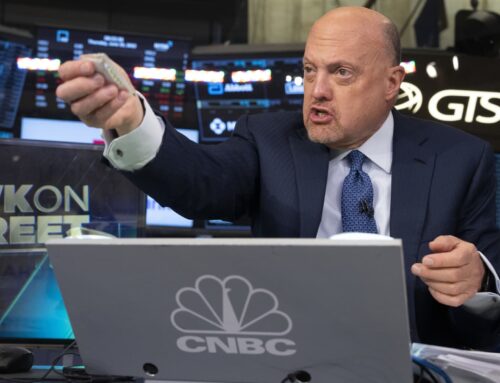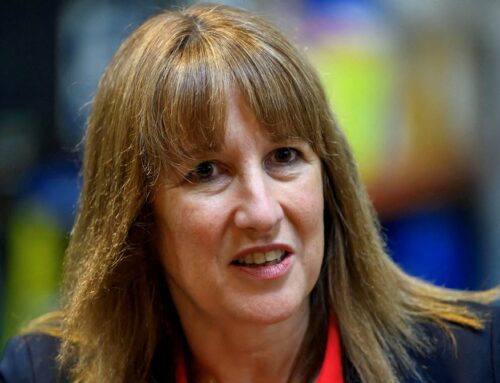Ready for Prime time players: Amazon studio highlights NBA debut
October 26, 2025
You could be forgiven for forgetting the historic nature of Amazon Prime Video’s NBA debut. After all, this has been perhaps the busiest Opening Week of an NBA season, both in the media and off the court.
The Opening Week of the NBA season marked the beginning of a new 11-year media rights deal and the biggest change to the league’s television rotation since it swapped NBC for ESPN/ABC in 2002. NBC’s return to NBA coverage was easily a bigger story this week than Amazon’s debut. Even incumbent ESPN made more headlines, thanks to its addition of the TNT-produced “NBA Tip-Off” and “Inside the NBA.”
Then there was the off-court story of gambling investigation that resulted in the arrests of Blazers coach Chauncey Billups and Heat guard Terry Rozier.
By the time Friday rolled around, the debut of the NBA on Prime could be fairly described as ‘under the radar.’ But make no mistake, it was still significant.
The Amazon games marked the first NBA regular season telecasts to ever air exclusively on direct-to-subscriber streaming. Yes, Peacock had a couple of preseason games and will have a streaming-exclusive doubleheader on Monday. But Friday still marked a milestone for the NBA on television, and for live sports on direct-to-subscriber streaming.
Amazon has NFL “Thursday Night Football” and NASCAR, but the NBA deal is the streamer’s most extensive (and expensive) contract. By extension, as Amazon is by far the streamer most invested in live sports, its NBA deal is the biggest commitment a streamer has ever made to a sports league.
There is a lot at stake for Prime Video, and the NBA, in this deal.
And Prime leaned into the significance — if not of the stakes, then of the novelty. Its pregame teasers hit the theme of what it means to be there at the beginning of something new.
There is only so much a new rightsholder can do to make itself feel “new” to the viewer and put its stamp on a league. When it began airing NFL games in 1994, FOX introduced the constant time and score display that revolutionized the way all sports are covered, everywhere. (Though ESPN technically got to it first during the World Cup earlier that year.) The network’s glowing puck on NHL games was less of a success.
More recently, NBC in its first year carrying NHL games introduced the “Inside the Glass” position that has become the standard on coverage of the league. Behind the same executive who created “Inside the Glass,” NBC’s Peacock on Monday will debut its “On the Bench” initiative for its new NBA package — with analysts stationed by the opposing benches throughout the game.
So how did Amazon put its stamp on the NBA in its debut? What was its differentiating factor?
Clearly, that would be the studio, where the biggest star was arguably the LED court used to break down plays. Pretty much every NBA studio has a makeshift court, but the size of the Amazon studio allowed for the kind of wide overhead angles that one might get of an actual game. And the LED court itself facilitated the use of augmented reality graphics to help illustrate the demonstrations.
But the studio crew itself represented something new, consisting mostly of NBA television neophytes. Host Taylor Rooks was a sideline reporter for TNT the past two seasons and Udonis Haslem had a stint with ESPN, but Dirk Nowitzki, Steve Nash and Blake Griffin have not previously worked on a national NBA telecast. (Nash was a soccer analyst for a brief time on TNT).
Prime Video has assembled a crew that is noticeably younger than ESPN’s TNT-produced “Inside the NBA.” These are not generational peers — Griffin is younger than you might think at 36, and Nash is older than you might think at 51 — but their general laid-back personas seem compatible not just with each other, but with an NBA audience that skews younger than in other sports.
It has long been the case that the Amazon sports audience skews noticeably younger than that of other networks. It was even the case for NASCAR, which has long struggled to attract younger viewers. Finding a way to get young people to make the time commitment to watch live sports has long been a challenge; it did not seem like an accident that Prime’s pregame tease at one point told viewers, “don’t settle for a highlight or the timeline.”
From the wardrobe (not a single suit and tie in sight, save for insider Chris Haynes) to the use of an in-studio couch, the pre and postgame programming clearly evoked an easygoing, informal hangout vibe suited to an era of podcasts and online watch parties. It is perhaps even more suited to this era than the streamer’s “Thursday Night Football” studio, which may have the same jocular vibe, but not the cozy environment of a studio.
If the TNT-produced “Inside the NBA” is still the NBA show of record, Prime Video clearly aims to have the NBA show of the moment — one that is both current and cutting edge. But it must be credible too.
An early test was the previously mentioned gambling investigation, which was addressed in the first segment of the pregame show. After a brief recap by Rooks and an update from Haynes, the pregame went around the table for insights tailored to the analysts’ various experiences — leaning on Haslem’s Miami Heat connections for insight on how the team is dealing with a teammate’s arrest; Nash’s coaching career for thoughts on interim Blazers coach Tiago Splitter, an assistant with Nash in Brooklyn; and Griffin’s Clipper days to relate the current situation to the Donald Sterling crisis the team and league faced in 2014.
It by no means felt like the definitive discussion of the topic — if there has been one, it was by the “Inside” crew the previous night — but obviously that is a lot to ask of a show in the first segment of its existence.
With the studio representing the new and different, Amazon’s game broadcasts were free to stick with the tried and true. The broadcast team of Ian Eagle and Stan Van Gundy paired together often on TNT, and the trio of Kevin Harlan, Candace Parker and Dwyane Wade also consisted of familiar voices.
Amazon did not reinvent the wheel on game coverage and did not have to; a comfortable, familiar telecast was probably the right way to go to assure viewers that the NBA on Prime will not be unlike the NBA on any other traditional channel. Apple TV erred in its first years of MLB coverage by opting for a non-traditional booth.
The biggest highlight from the game telecasts was longtime ESPN sideline reporter Cassidy Hubbarth’s interview with NBA commissioner Adam Silver during Celtics-Knicks, marking Silver’s first public comments since the gambling arrests. It will not go down as one of the most memorable interviews in sports TV history, but it says something that Amazon — in its first ever NBA telecast — had one of the biggest gets in all of sports. (It was also a notable get for Hubbarth, who ESPN repeatedly passed over for top studio and sideline positions.)
All in all, it was a promising debut in line with Amazon’s first NFL and NASCAR telecasts.
The reality is that Amazon is the NBA “C” partner. It will not have the biggest games this season — it gets its first conference final next year — and the new “NBA on NBC” and ESPN era of “Inside the NBA” figure to get as many headlines as anything Amazon does this season, if not more. That is an unusual position for the streamer, whose debuts on NFL and NASCAR coverage were closely watched.
But it might also be an indication of Prime Video cementing itself as a real and accepted part of the sports media space. At this point, it does not really have to prove itself on live sports coverage.
Tags: NBA BroadcastersNBA on Prime Video
Search
RECENT PRESS RELEASES
Related Post



